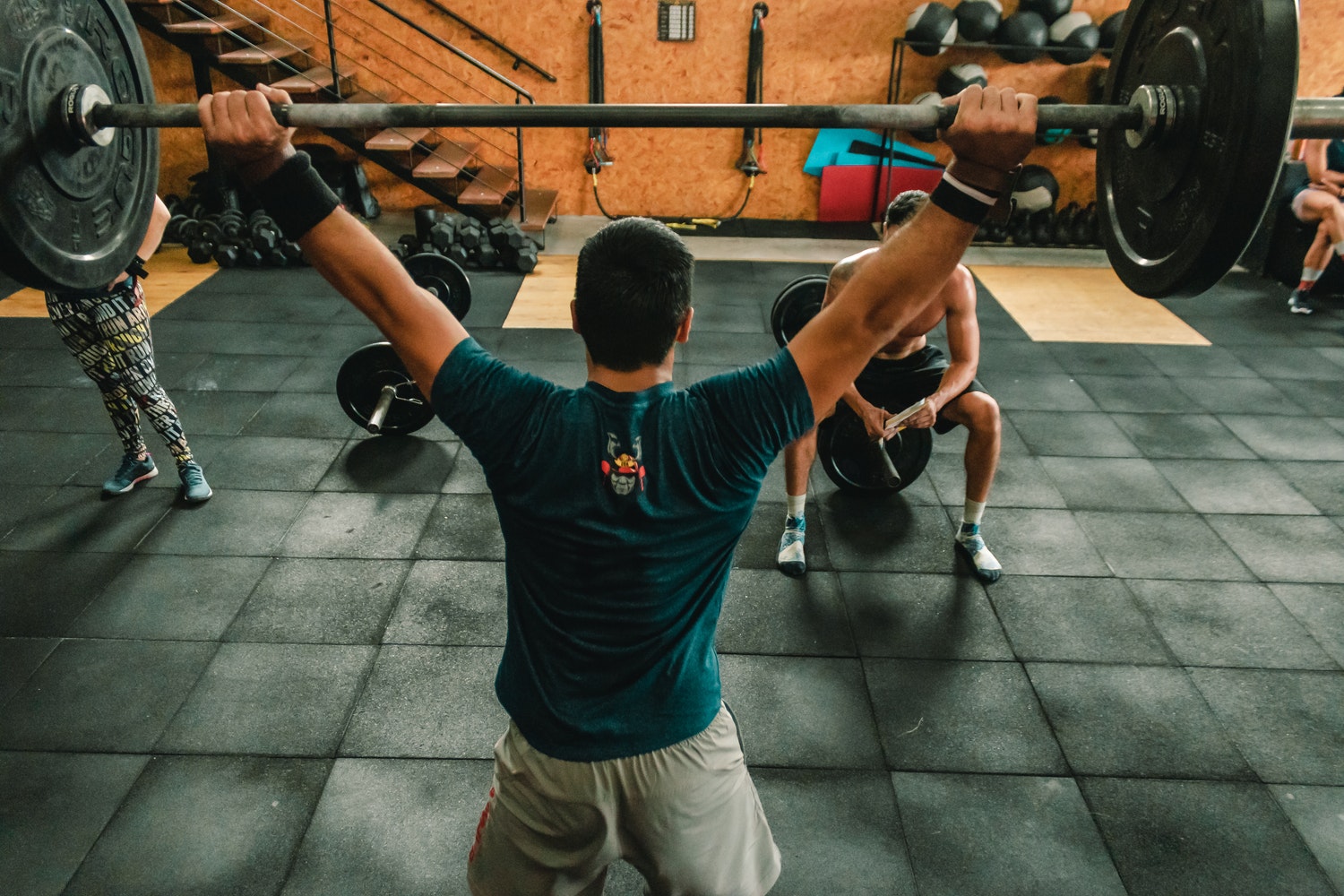The ads you see on television and social media may lead you to believe that washboard abs can be obtained in just a few weeks. The truth is, there is no quick way to get in shape. Fitness is a long-term commitment that requires changes in your lifestyle and a significant time commitment.
In fact, one study found that six weeks of exercise is not enough to produce physically noticeable results. After six weeks of regular cardio and high-intensity, full-body training, 25 sedentary men experienced little to no noticeable results. Beyond their physical appearance, other factors such as body fat and oxygen efficiency remained unchanged.
A lack of results can be discouraging, but keep in mind that fitness is a marathon, not a sprint. Giving up will only guarantee that you never see your results, so stick at it. If your lack of results is discouraging you, keep in mind that:
- There is no time period for how long it takes to get in shape.
- The time it takes to get in shape depends on your goals.
- Increasing physical activity level can make you feel better before you see noticeable results.
- The type of exercise
- Fitness level
What Does It Mean To be in Shape?
Being in shape can mean one thing to you and something completely different to someone else. Perhaps your idea of being in shape is running a 5k, while someone else’s is bench pressing 300 pounds.
Your definition of what it means to be in shape can also evolve, especially as you begin to reach your goals. Upon starting your fitness journey, if your goal was to run a 5k, it could likely evolve to run a half-marathon. As you get yourself in shape, you may change your perception of what that means.
Your goals and baseline level of physical fitness will ultimately decide how long it takes to get in shape. If you are an active and healthy person, it will generally take quicker to achieve results than sedentary.
Furthermore, your idea of being in shape may be unrealistic. It’s easy to be envious of the Chris Evans and Brad Pitts of the world; however, keep in mind those results were obtained through intensive personal training, strict diets, and expensive supplements. Most of us don’t have the time or money to achieve such results.
Instead of focusing on other people, focus on yourself instead. While you may not see immediate results, you will likely start to feel better in just a couple of weeks. Being in shape shouldn’t be just about physical appearance. In addition to improving mood and energy, regular exercise can reduce the risk of heart attack, high blood pressure, diabetes, and many other serious medical conditions.
Why Can’t I Get In Shape?
You can get in shape. However, there are a few factors that may be limiting your results:
Diet
A well-balanced diet conducive to physical fitness will include three macronutrients–protein, carbs, and fat. It is recommended that your caloric intake consists of 55-60 percent carbs, 25-30 percent protein, and 20 percent fat.
If you are a physically active individual or looking to put on lean muscle mass, you will benefit from eating 0.5 to 0.8 grams of protein per pound of body weight. Protein is best derived from lean sources, such as chicken breast or tilapia; however, fattier sources such as salmon contain healthy polyunsaturated and monounsaturated fats, essential energy sources.
Complex carbohydrates––brown rice, whole wheat bread, sweet potatoes, quinoa––are also essential energy sources. Without an adequate supply of carbs in the body, the body will break down muscle fibers for energy. That can be very counterintuitive!
Keeping track of your calories can also help adjust your diet to your goals. If you want to lose weight, you want to be in a calorie deficit. This means eating fewer calories than you burn. If your goal is to gain weight, you want to be in a calorie surplus––eating more calories than you burn.
Age
Your age can also have a drastic effect on your fitness. While your body physically peaks in your 20s, it will begin a steady decline once you hit your 50s. As your muscles, bones, and joints weaken, you may no longer be able to exercise the same way you used to.
While physical shape can still be maintained well after your 50s, it will become a greater feat without a baseline fitness level. In fact, beginning your fitness journey in your 40s can be an uphill battle as energy levels may not be the same as they once were.
Do not let that discourage you, though! While physical results may be harder to come by, beginning exercise later in life has been shown to reduce the risk of cancer, cardiovascular disease, and all-cause mortality.
If you are beginning your fitness journey at a later age, you will enjoy many benefits. Just remember to account for your limitations. Start slow and gradually work your way up. Low-impact exercises that are easy on the joints, such as swimming or the Ski-Row Air and Ski-Row Air + PWR machines by EnergyFit, can also prevent injury.
Time Commitment
In order to achieve the results you want, you need to put in the hours. While you may start to feel the positive effects of exercise in just two weeks, physical results will take much longer to show up.
If you have not worked out in a very long time and have lost any level of physical fitness, it can take two months of working out most days of the week to reach a moderate level. At the six to eight-week mark, you may start to see results. Three or four months in, you can experience a good overhaul of your fitness and physical condition.
Keep in mind; this time frame requires consistent exercise and adherence to your diet. Putting on any muscle mass is an unrealistic goal without regular resistance training and a high protein intake.
If your goal is to look like an Avenger, you will need to increase your time frame even further. To sport a “ripped” body with visible six-pack abs, you may need at least one year of consistent training and exercise.
How You Work Out
How you go about working out will have a tremendous impact on your results. If your goal is to put on muscle mass, you will need to decide between a full body and a split routine. While a full-body workout will work each of your major muscle groups, a split routine will divide your workouts to target only one to two muscles each.
While a split routine is most effective for putting on muscle mass, a full-body workout is more efficient and allows for the addition of cardio, which is great for those looking to lose weight. A good full-body workout will include both high-intensity cardio and resistance training.
One of the best full-body workouts you can get is with the Ski-Row Air and Ski-Row Air + PWR machines by EnergyFit. Not only do these machines provide a high-intensity full-body workout, but they are also incredibly efficient. Just 15 minutes can provide an unbeatable workout that works 85 percent of the muscles in your body!
Recovery
Without allowing your body to recover, you can inhibit your results and increase your risk of injury. It is recommended that you incorporate one to two recovery days between each of your workouts. This prevents overtraining and allows your muscles to recover and grow.
One of the most effective forms of recovery is active recovery. This involves incorporating light exercise between sets, immediately following exercise, and during recovery days. While sedentary rest may sound more appealing, active recovery offers the following benefits:
- Reduce lactic acid buildup in the muscles
- Eliminate toxins
- Keep muscles flexible
- Reduce soreness
- Increase blood flow
- Help you maintain your exercise routine
What Role Do Genetics Play?
Your genetics can influence your ability to get in shape. Such genetic factors as testosterone production, muscle composition, and metabolism all play a role in your athletic ability. However, don’t let that be your excuse.
While genetics may account for half of your athletic and physical performance, the other half is dependent on you. This comes down to time commitment, consistency, intensity, and diet. By focusing on the factors you can control, you optimize your ability to get in shape.
There are also certain genetic factors that you may be able to control. By adjusting your diet and training, you can account for your genetic limitations and perform to your optimum ability.
Conclusion
Getting yourself in shape is the best way to improve your mood, energy, and overall health. It also can’t hurt putting on some muscle or dropping those extra few pounds, right?
No matter what your goals are, though, fast results should not be expected. While you may start to feel the positive effects of exercise in just a few weeks, obtaining physical results can take months or even years.
To get yourself in shape in the quickest amount of time, adhere to a strict diet and consistent training regiment. Also, account for the factors you can’t control, such as age, injuries, and genetics. Only train to your ability, as overtraining can harm your results.
Above all else, do not get discouraged. While the results may be coming in slowly, the positive effects are not. Regular exercise is one of the healthiest choices you can
Sources:
How to safely and effectively create a calorie deficit for weight loss | Medical News Today
Training Vs. Body Image | JSCR
How Your Genes Could Impact Your Fitness and Health Goals | Men's Journal





Leave a comment
All comments are moderated before being published.
This site is protected by hCaptcha and the hCaptcha Privacy Policy and Terms of Service apply.